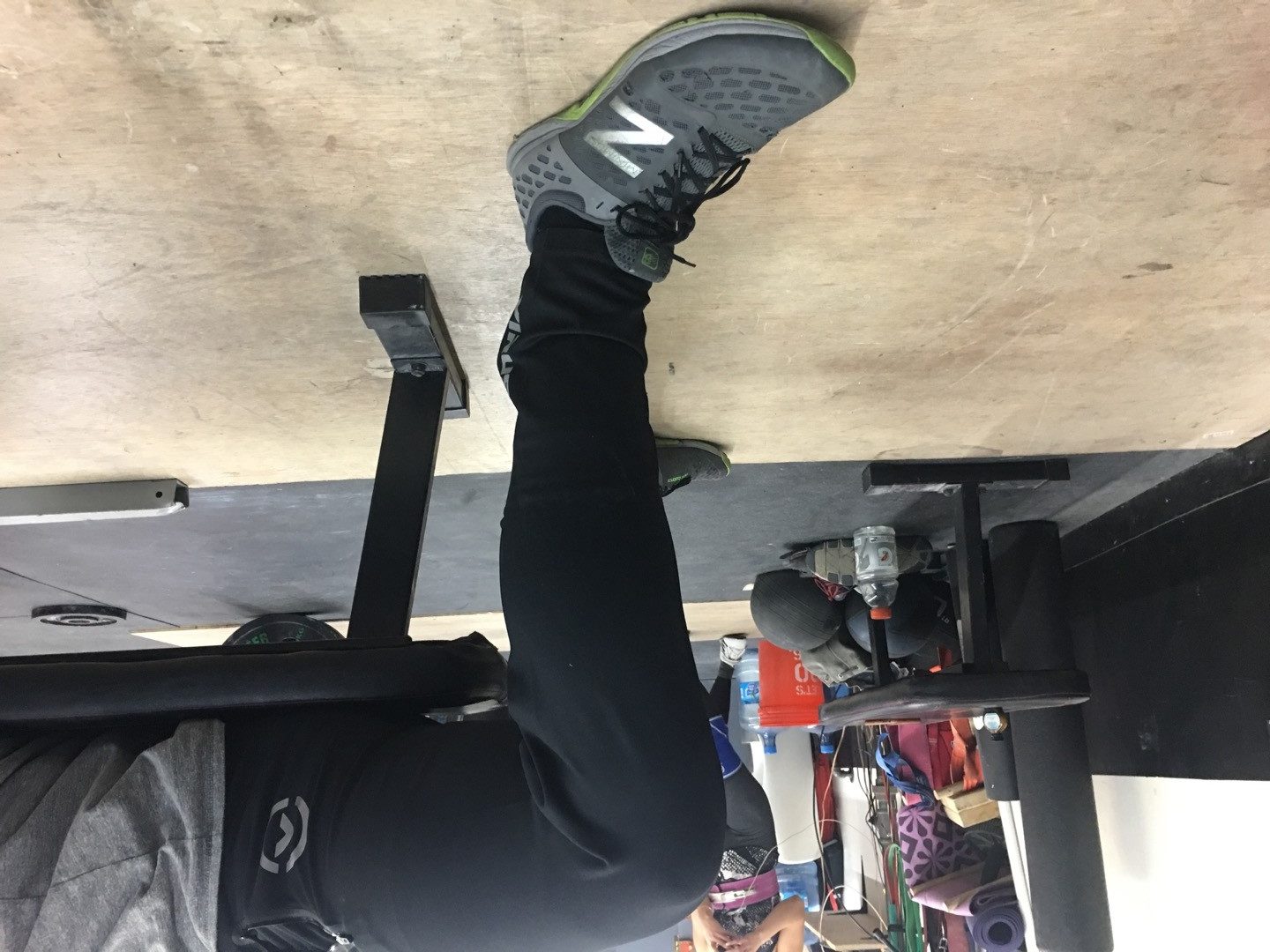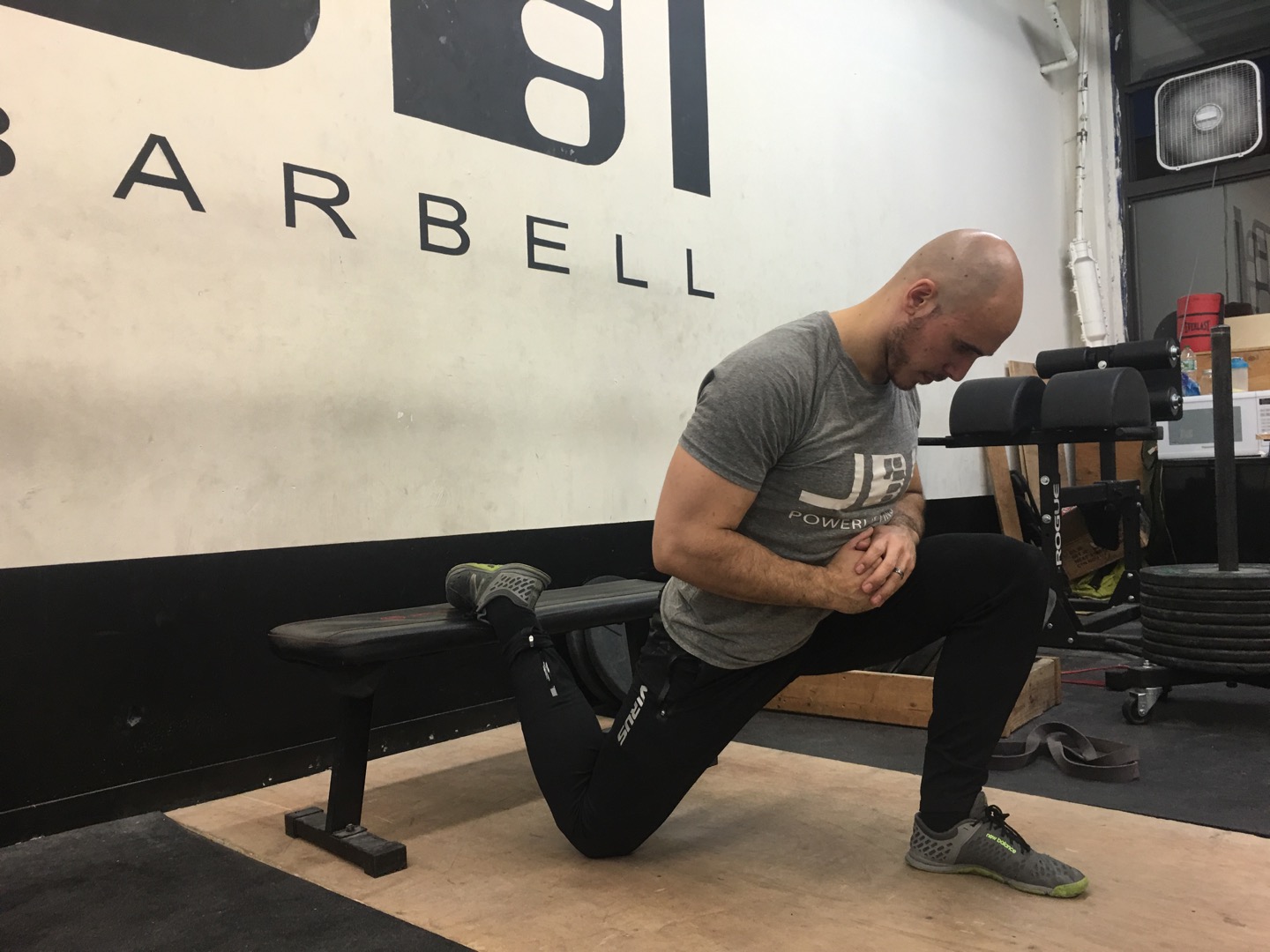Written by Jesse Irizarry
Cover Photo by 9for9 Media
It’s hard to believe, but I wasn’t always a grumpy, frail-looking strength coach. I was once a very jolly and lovable three hundred pound powerlifter. While I didn’t exclusively compete in equipped powerlifting, I did my share of meets in bench press shirts, especially when I began to specialize in the bench. That was the hip thing to do just a few short years back.
A year or two after I took a break from competitive powerlifting, I started a small powerlifting club with mostly novice lifters. Many of these lifters, including those who had already competed in raw powerlifting, were confused on how to effectively use leg drive in the bench press, or what it meant to feel it at all. I found this confusing because equipped bench pressers often talked about this ad nauseam when I was competing and now it seemed to be a mystery for these younger lifters. But the more I talked with these younger lifters the more I learned they simply didn’t understand the limitations that body type and training can place on how you use leg drive. And this why is why they didn’t use it to their advantage.
Good leg drive in the bench press isn’t just pushing your heels straight down to the ground as hard as you can. The role of your leg drive in helping press the weight, and the ideal position for you to maximize this drive is going to be dependent on mobility, body size, proportions, and even the footwear you choose. Good leg drive won’t make or break your bench press and truthfully I never fully understood it’s use myself until I started pressing some heavier weights. Some very strong powerlifters don’t use much leg drive at all and others will benefit from training mostly without out and just using it leading up to and during competition. But it’s important to learn how it can potentially help you based on your needs and limitations when trying to press as much weight as possible. We’ll go through how each of these factors influence your performance one at a time.
Limitations in Foot Placement
Watch pretty much any internet tutorial on the bench press and you’ll hear the coach or trainer tell you to put your feet “behind” you. But these coaches never seem to define what this means or specify how far back you should put your feet.
We set our feet back in a bench press to of course try to arch our bodies up higher and create an ideal position from which to drive our feet down to the ground. But the issue with telling a more novice powerlifter to set their feet as far back as possible is that many people don’t have the hip mobility or even stability to create useful tension and drive in this extreme position. And if they do manage to force themselves into this position and try to drive their legs, they end up cramping in their hips or legs. This is especially a problem for bigger lifters. Telling a lifter to just haphazardly place their feet as far back as possible and arch can be more of a detriment than anything else.
If the lifter is too stiff to extend his or her hips in this position, setting their feet back will be an uncomfortable and utterly useless position as they’ll get very little leg drive from it, or none at all.

If your feet are set back but you don’t have the needed mobility, your hip flexors will be contracting and you will not be able to get the intended leg and hip drive in this position without your butt lifting off the bench as you drive and press.
When starting out, it’s better to adopt a less exaggerated foot position where your shin is perpendicular with the ground. Almost anyone can extend initiate a downward push against the ground (think top of leg pushed slightly toward the ceiling when doing this) in this position and initiate the leg drive in the pressing action without the butt lifting off the bench.

This is a good position to start from but if you still can’t extend the hips and create a global (full body) arch in this position or if you want to work toward a greater arch, you need to consider the limiting factors.
To restore the mobility needed for this specific position, we need to take a closer look at the hip flexors. The rectus femoris crosses both the hip and knee joint. So when you arch, this muscle is put in a position where it is pretty intensely stretched in this position because when you arch, the hip is extended while the knee is flexed. The rectus femoris acts on these joints opposite of this. So to increase available range of motion in this position, it makes sense to imitate this stretched position. A hip flexor stretch/mobilization with your foot elevated on a bench or assisted with a band does just this. You can do this with whatever breathing or relaxation technique you practice.


This can be done while or before warming up for the bench press so that this immediate increase in range of motion can be used during your bench press session. If this acute increase in flexibility is used right away in loaded movement, there’s a greater chance the effects will be more chronic and this new range of motion will be your new baseline norm. As this available hip range of motion increases, you can adjust your feet back further as long as the hips are still able to extend and the arch isn’t localized in the lower back.
Ankle mobility can play just as big of a role in where you set your feet and how high you can arch as the hips do. It doesn’t take a PHD in biomechanics to figure out that if your toes are turned out excessively or they roll when you press, that you need to work on your ankle mobility.

If your ankle range of motion is so poor that your heels barely stay in contact with the ground, you definitely won’t get much drive from this uncomfortable position. There’s not shortage of information on how to improve ankle mobility so we won’t go into specific drills. Just understand that this small thing can cause big problems in your bench press.
Different Leg Drive For Different Sized Lifters
Even with dedicated work to improve range of motion in the hips and ankles, bigger powerlifters will have difficulty with the cue to drive their feet straight down into the floor in an arched position. Super heavyweights will almost always struggle to drive their hips upward while keeping their butts in contact with the bench. They cannot lock their position in as good as smaller lifters and so if they drive their feet down their hips will lift up. I know from personal experience that all the mobility work in the world won’t help with this once you’re of a certain healthy girth.
These bigger lifters are better suited to use a type of horizontal leg drive. The idea behind this horizontal push is to think of driving your feet against the ground to produce a sliding action of the body toward the top of the bench. If you keep your body stable and upper back tight and pinned against the bench, there may be a slight upward shift of the body toward the top of the bench but the butt will stay in contact with the bench and the feet will stay flat on the ground. This slight shifting is within the rules of most federations.
The bigger I got, the more I used this type of leg drive. In fact, Chad talked about this similar technique in this video with Mark Bell:
(jump to 11:02 in video)
The Shoes Make The Man…Or At Least The Leg Drive…
I mentioned before that ankle mobility affects how far back you can and should set your feet. But strictness of powerlifting federation in which you compete can also influence your position.
When I began powerlifting, I competed in small federations, some of which aren’t around anymore, that had no rules against keeping the heels off the ground. Because I had good hip mobility and wasn’t too big yet, I was able to arch pretty high with my feet set back. Even in this position with my heels up, I still felt a strong leg drive as I actively pushed my heels toward the floor when I pressed.

The type of shoe I wore wasn’t too important because keeping my heels down wasn’t important. But after I began competing in USAPL, I figured out quickly that an Olympic Weightlifting shoe with a big heel lift was necessary if I was going to get lifts passed. The heel lift allowed me to keep my feet a little further back which allowed me to drive into the floor in a way more similar to how I did when I could keep my heels up. The elevated yet flat hard sole also allowed me to feel more grounded and kept me from shifting my feet as I pressed. Trust me, you can get a lift turned down on this minor heel shift.
As I got bigger and it inevitably got more difficult to get into good position, the heel lift proved invaluable. Without it, I wouldn’t have gotten the same leg drive I once did because the added mass prevented me from bending my knees as far back as I once did.
If there’s no rule about heel contact in the federation you compete in, you may find it more comfortable to lift in lighter, flatter shoes like I did. But If you do not compete in stricter federation such as USAPL, and weightlifting shoes are a little pricey for you, you’ll have to figure out an optimal foot position that allows you to get adequate leg drive without lifting your shifting your heels. The foot position that is optimal for you personally may not fly in competition because your heels may visibly sift in your flat, soft shoes. If you keep pressing in flat shoes you may have to use a more horizontal leg drive as I outlined above. Figure out what your needs are long before competition so you don’t waste time training unspecific to how you’ll have to lift to get two or three white lights.
Perspective
Bench Press lovers can get carried away with discussing technique and leg drive. Leg drive definitely isn’t the only contributing factor in pushing heavier weight and there are some very strong pressers who don’t focus much on it at all. But if you’re an intermediate level competitive lifter trying to increase your total, you need to find what works for you and your individual strengths. Figure out where your strengths lie and what positions are best for you and go to work on using them effectively.













